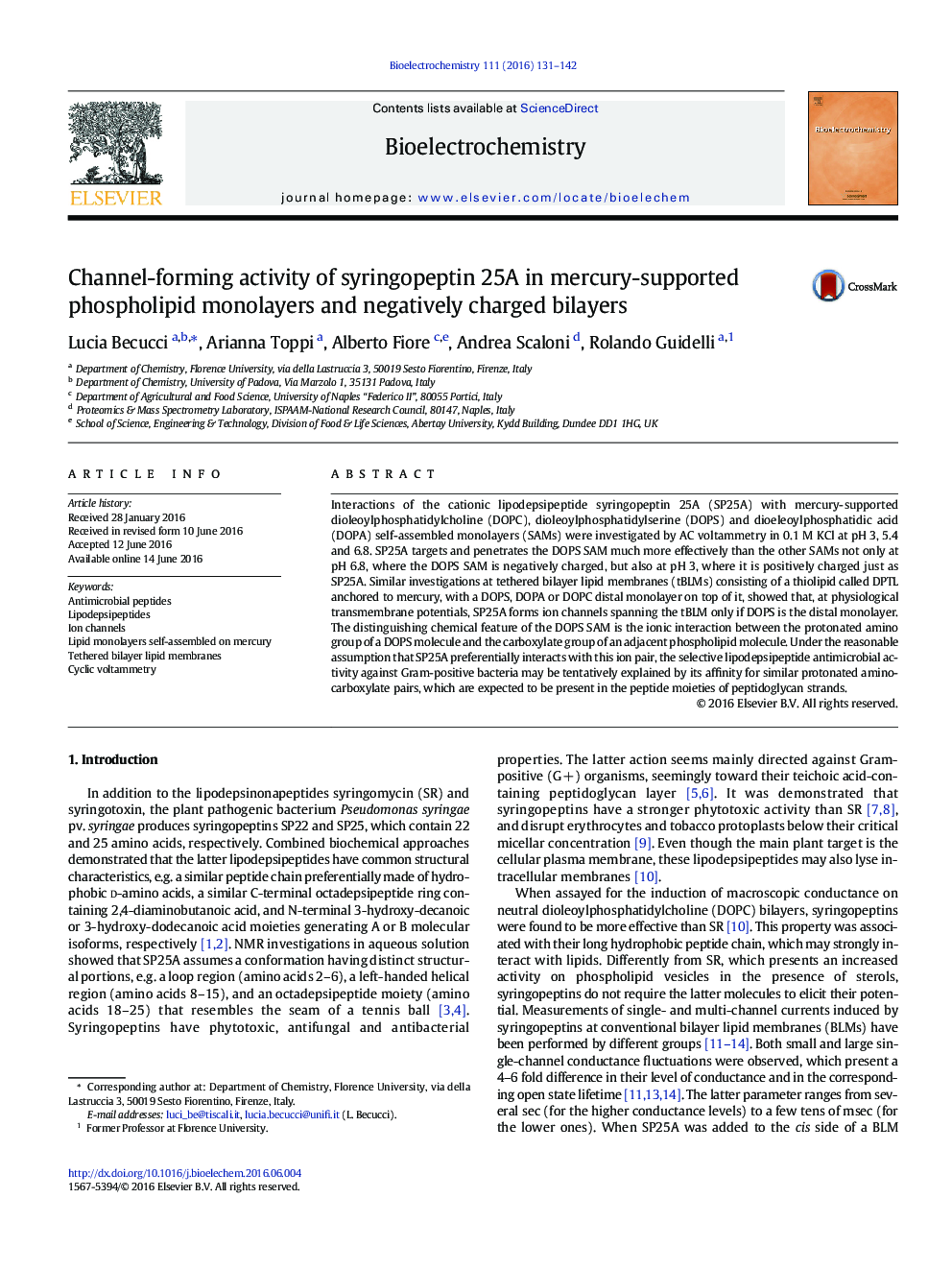| کد مقاله | کد نشریه | سال انتشار | مقاله انگلیسی | نسخه تمام متن |
|---|---|---|---|---|
| 1266845 | 1496902 | 2016 | 12 صفحه PDF | دانلود رایگان |

• Syringopeptin 25A (SP25A) targets a dioleoylphosphatidylserine (DOPS) SAM.
• SP25A forms ion channels in tethered BLMs with a DOPS distal monolayer.
• The target is NH3-CHR-CO2–·+ NH3-CHR-CO2− pair between adjacent DOPS polar heads.
• CO2−·+ NH3− pairs exist in premature peptidoglycan of Gram-positive bacteria.
• SP25A targeting to CO2−·+ NH3− pairs of Gram-positive bacteria may inhibit them.
Interactions of the cationic lipodepsipeptide syringopeptin 25A (SP25A) with mercury-supported dioleoylphosphatidylcholine (DOPC), dioleoylphosphatidylserine (DOPS) and dioeleoylphosphatidic acid (DOPA) self-assembled monolayers (SAMs) were investigated by AC voltammetry in 0.1 M KCl at pH 3, 5.4 and 6.8. SP25A targets and penetrates the DOPS SAM much more effectively than the other SAMs not only at pH 6.8, where the DOPS SAM is negatively charged, but also at pH 3, where it is positively charged just as SP25A. Similar investigations at tethered bilayer lipid membranes (tBLMs) consisting of a thiolipid called DPTL anchored to mercury, with a DOPS, DOPA or DOPC distal monolayer on top of it, showed that, at physiological transmembrane potentials, SP25A forms ion channels spanning the tBLM only if DOPS is the distal monolayer. The distinguishing chemical feature of the DOPS SAM is the ionic interaction between the protonated amino group of a DOPS molecule and the carboxylate group of an adjacent phospholipid molecule. Under the reasonable assumption that SP25A preferentially interacts with this ion pair, the selective lipodepsipeptide antimicrobial activity against Gram-positive bacteria may be tentatively explained by its affinity for similar protonated amino-carboxylate pairs, which are expected to be present in the peptide moieties of peptidoglycan strands.
Journal: Bioelectrochemistry - Volume 111, October 2016, Pages 131–142